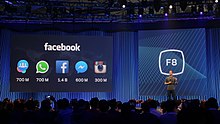As a professional Java programmer, I've been trying to understand - why the hate toward Java for modern web applications?
I've noticed a trend that out of modern day web startups, a relatively small percentage of them appears to be using Java (compared to Java's overall popularity). When I've asked a few about this, I've typically received a response like, "I hate Java with a passion." But no one really seems to be able to give a definitive answer.
I've also heard this same web startup community refer negatively to Java developers - more or less implying that they are slow, not creative, old.
As a result, I've spent time working to pick up Ruby/Rails, basically to find out what I'm missing. But I can't help thinking to myself, "I could do this much faster if I were using Java," primarily due to my relative experience levels.
But also because I haven't seen anything critical "missing" from Java, preventing me from building the same application.
Which brings me to my question(s):
Why is Java not being used in modern web applications?
I've noticed a trend that out of modern day web startups, a relatively small percentage of them appears to be using Java (compared to Java's overall popularity). When I've asked a few about this, I've typically received a response like, "I hate Java with a passion." But no one really seems to be able to give a definitive answer.
I've also heard this same web startup community refer negatively to Java developers - more or less implying that they are slow, not creative, old.
As a result, I've spent time working to pick up Ruby/Rails, basically to find out what I'm missing. But I can't help thinking to myself, "I could do this much faster if I were using Java," primarily due to my relative experience levels.
But also because I haven't seen anything critical "missing" from Java, preventing me from building the same application.
Which brings me to my question(s):
Why is Java not being used in modern web applications?
- Is it a weakness of the language?
- Is it an unfair stereotype of Java because it's been around so long (it's been unfairly associated with its older technologies, and doesn't receive recognition for its "modern" capabilities)?
- Is the negative stereotype of Java developers too strong? (Java is just no longer "cool")
- Are applications written in other languages really faster to build, easier to maintain, and do they perform better?
- Is Java only used by big companies who are too slow to adapt to a new language?
------------------
Modern day startups need to hit the market as soon as possible. They
don't need to spend about six months in order to release their Java web
application.
Twitter for example was built using Rails/Ruby but once it became unscalable, they migrated to the JVM.
Not to mention that the development process isn't productive: code -> compile -> deploy while it is in frameworks like (Rails/Django/Grails): run testing server -> code -> change things and see what happens.
The good news is that JRebel lets you see code changes instantly.
Twitter for example was built using Rails/Ruby but once it became unscalable, they migrated to the JVM.
Not to mention that the development process isn't productive: code -> compile -> deploy while it is in frameworks like (Rails/Django/Grails): run testing server -> code -> change things and see what happens.
The good news is that JRebel lets you see code changes instantly.
----------------------
|
In my experience, Java for web applications is overkill for small
applications. A simple blog with one database table hold blog entries,
for example, could be done in something much simpler.
I have usually seen Java do much better in much larger web applications (think banks and insurance companies) that communicate with a number of other systems (such as mainframe back-ends and databases and peer web-services background batch-processing systems... all in the same application). From what I've seen, the architecture of a JavaEE web application is just usually more than is needed for small/simple web applications. |
|
I programmed java web apps for 10 years before I switched to python,
4+ years ago. I feel that I'm much more productive using python and can
get much more done in a shorter period of time, and to be honest, I'm
much happier when I develop in python. Here are some of the reasons why I
think python is better then Java based on my personal experience, your
milage may very.
Web Frameworks:When I first start programming web apps in Java, Struts just came out, and it wasn't great, but it was the best thing available. I created a bunch of struts apps, and a few in other frameworks along the way. Whenever a new framework came out (Tapestry, Wicket, GWT, stripe, grails, AppFuse, Play, RichFaces, Spring, etc), I would try it out and see if it was any better, and most times it was only a little better, and sometimes not better at all. I do have to say the play framework is a step in the right direction.Batteries not included:One of the most annoying parts of Java was the fact that most of the libraries that you use were not included in java itself, you had to include a ton of 3rd party libs from places like apache commons. If you use something like hibernate with any other large library, you end up in Jar dependency hell, where hibernate needs one version of a jar, and something else needs another version. If you load the jar files in the wrong order, you are out of luck. You need to depend on tools like maven, and ivy to manage your dependencies, and this just brings in more dependencies into your project which results in projects being huge. I had some war files 100MB+ war files for the simplest web apps.Too many options:For some reason there seems to be way too many different ways to do the same thing in Java. There are over 38 different web frameworks for java according to wikipedia ( http://en.wikipedia.org/wiki/Comparison_of_web_application_frameworks#Java ) and 23 different ORM's ( http://en.wikipedia.org/wiki/List_of_object-relational_mapping_software#Java ) just to name a couple of examples. If you look at other languages they have a more reasonable number. Some people think that having lots of options is a good thing, but it isn't it leads to a lot of wasted effort in the developer community, everyone is reinventing the same wheel, and if you are a new person to the language you have too many option to pick from.App servers:Java web applications are really heavy, and require a lot of resources to run. They are especially memory hungry. Like any piece of software they can be tuned to reduce their resource footprint, but compared to other languages their out of the box setup is horrible. In my past I have used weblogic, websphere, Jboss, tomcat, and jetty. I only used the first three when I was forced to use EJB's, but even if you aren't using EJB's they were large app servers and sometimes hard to configure and get running correctly. Tomcat and Jetty are much better and easier to setup, but are still resource hogs.App Hosting:If you aren't running your own server it is real hard to find shared hosting for your java apps at a reasonable price. The main reason is because java apps require much more memory compared to other languages, so it doesn't make sense for a shared hosting provider to spend their valuable RAM running a java site, when they could run 5 php sites in the same place. That means there are less providers offering java hosting, which in turn means higher costs to run your website.Development Time:When I developing in java, I found myself much slower then what I can do in python. I would need to make a change, compile, redeploy and then test, and this slows down the iterative process. I know there are ways to make this faster, but even at it's best, I felt much slower then what I can do in python.There is also a lot less boilerplate code to do the same thing in python, so I spend less time developing the code as well. Java just feels over engineered in a lot of parts, A lot of the API's and interfaces are just way to complicated for what you want to do. And everyone and their brother thinks they are a java architect and this results in big complicated systems that are hard to use and develop with. IDE:When I was developing in Java, I felt stuck to the IDE, I was lost without it. IntelliJ is the best IDE's on the market, and it was hard switching to python because there wasn't anything like it for python. So instead of an IDE, I just used textmate, which is just a normal text editor. It was hard at first, but because it was just a text editor, it was a really fast and responsive application. I could open my whole project in a few seconds, whereas when I want to open a project in an IDE it could take a minute or more, with a machine with a ton of RAM. The makers of IntelliJ came out with a python editor called pycharm, I bought it when it first came out, and it is great. But what I realized is that I don't need an IDE for python, I'm fine with a text editor. When I go back to working on Java web apps which I have to do from time to time, I try to use the text editor, but I haven't quite mastered that yet. I personally need the IDE for Java more because If I mess up something it takes longer to recompile and redeploy, which slows me down.ORM:When I first started using Hibernate as an ORM, I thought it was great, it had it's problems, and it wasn't perfect, but it was better then what I was doing before. I was happy with it, until I did an application with Django's ORM on a python project, and that opened up my eyes, that is how an ORM is supposed to work. After that project I went back to hibernate, and I just felt disappointed, and longed for going back to Django's ORM. Another great python ORM is sqlalchemy, which is similar to Django's ORM, but a little different. I have limited experience with ROR's ORM, but from what I remember, it was pretty good as well.Templates:The web templating systems in Java aren't that good, and I think I have tried them all (tiles, freemarker, velocity, etc). Most of them offer only basic functionality and are a pain to work with. On the Python side, my two favorites are Django templates and Jinja2, they have everything that I could need in a templating engine, and are really easy to use. |




